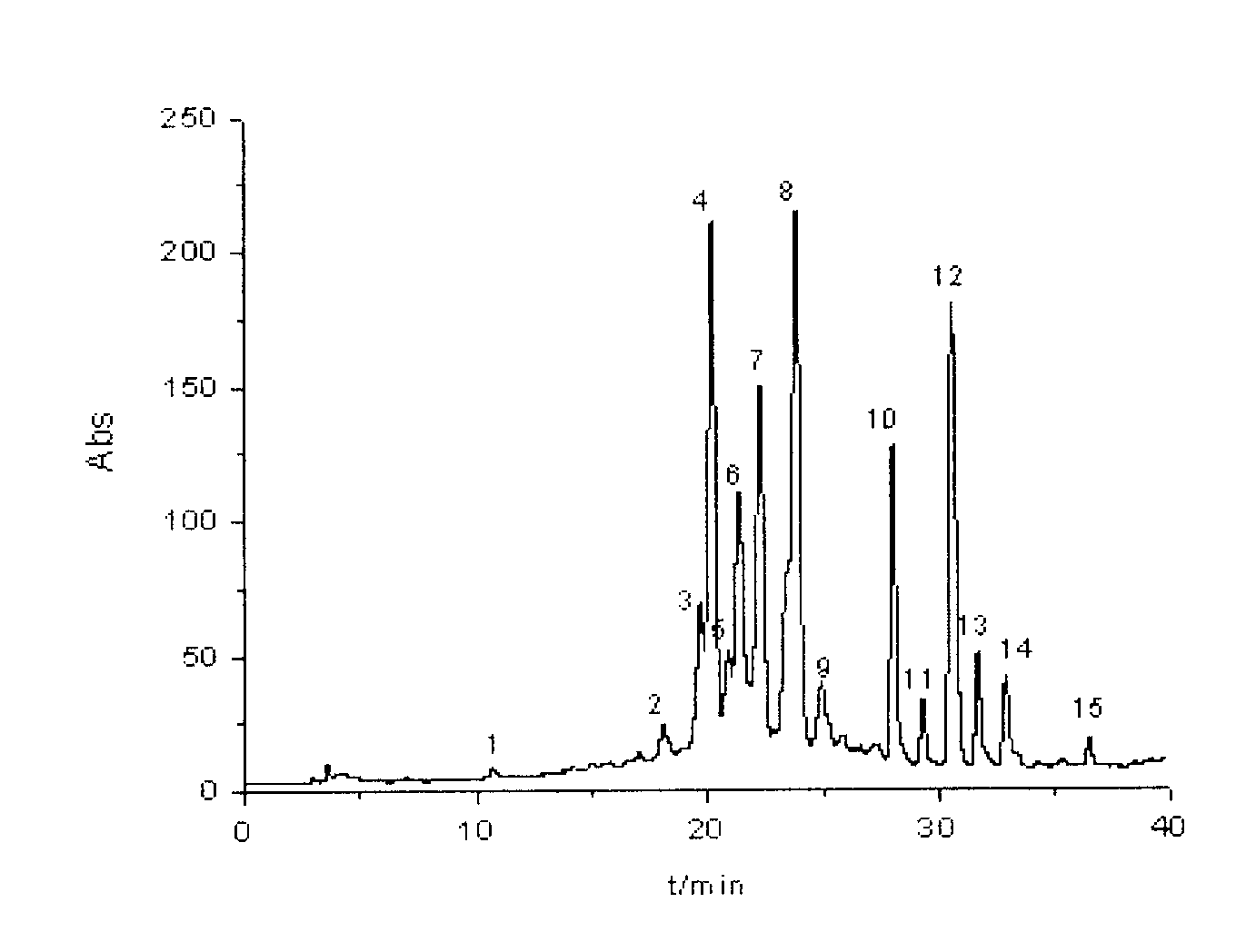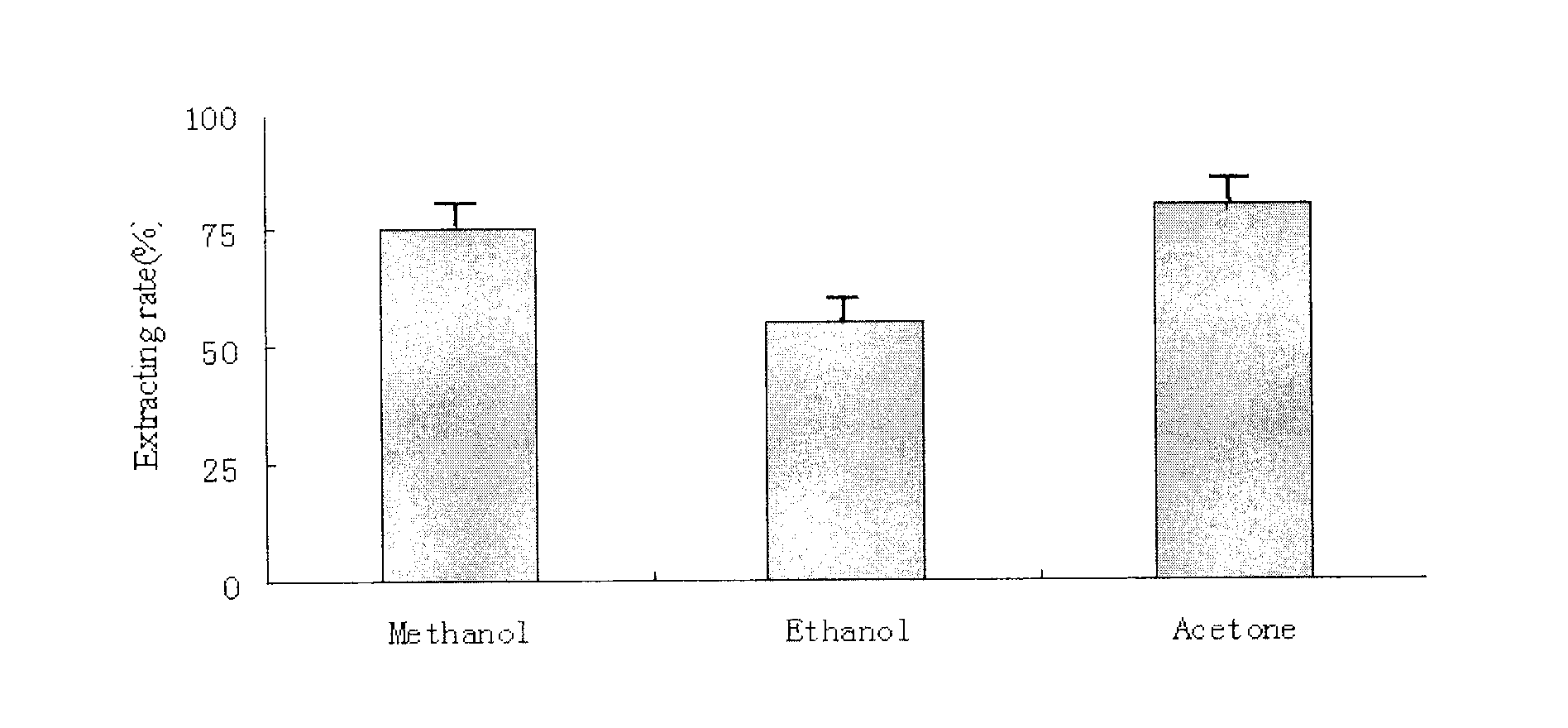Oligomeric proanthocyanidins and method for extracting same
An oligomeric proanthocyanidin, extraction technology, applied in chemical instruments and methods, pharmaceutical formulations, antidote, etc., can solve problems such as large differences in product purity
- Summary
- Abstract
- Description
- Claims
- Application Information
AI Technical Summary
Problems solved by technology
Method used
Image
Examples
Embodiment 1
[0063] Example 1 Extraction Proanthocyanidins in lingonberries (ambient temperature of 4°C)
[0064] The operation process in this embodiment 1 was all carried out at an ambient temperature of 4° C. (using an air conditioner to control the temperature).
[0065] After the Daxing'anling Dusi lingonberry was squeezed to remove the juice, weigh 100g of the pomace, add 300ml of pre-cooled (4°C) 70% v / v acetone to extract for 1h, centrifuge at 4000rpm for 30min, collect the supernatant filtered filtrate, concentrate in vacuo, and then Put the concentrated solution on the column (the column filler is HP-2MG resin, 4° C.), and flush the column volume with deoxygenated water (distilled water) with nitrogen gas for 1 to 2 column volumes before loading the column. Put the concentrated solution on the column until the HP-2MG resin is saturated. After the sample is loaded, it is eluted with deoxygenated distilled water with pH=3.0 until the washing solution has no obvious red color (OPC...
Embodiment 2
[0089] Embodiment 2 extracts Proanthocyanidins in lingonberries (ambient temperature of 16°C)
[0090] The operation process in this embodiment 2 is all carried out under the environment temperature of 16 ℃ (using air conditioner temperature control). Other conditions and steps and raw material are completely consistent with embodiment 1. After testing, the obtained cranberry proanthocyanidin product is basically consistent with that of Example 1, the proanthocyanidin content is 95% (w / w), and the content of proanthocyanidin (including monomers) below the tetramer reaches 90% (w / w).
Embodiment 3
[0092] The conditions and steps of the method for extracting proanthocyanidins used in this example, as well as the raw materials, and the methods for determining total polyphenols, proanthocyanidins and total flavanols are consistent with those in Example 1.
[0093] 1.1 Determination of leaching solvent (except that the solvent used is different, all the other method conditions and raw materials are the same as in Example 1)
[0094] Methanol, ethanol, and acetone are three commonly used extractants for phenolic substances. Select the same concentration of ethanol, methanol, and acetone to extract, determine the best extraction solvent, and the results are obtained by figure 2 It can be seen that the extraction effect of methanol and acetone on polyphenols is better than that of ethanol, and it is not easy to introduce impurities. Methanol is highly toxic. Therefore, acetone was selected as the best extraction solvent in this experiment.
[0095] 1.2 Single factor experi...
PUM
| Property | Measurement | Unit |
|---|---|---|
| wavelength | aaaaa | aaaaa |
Abstract
Description
Claims
Application Information
 Login to View More
Login to View More - R&D
- Intellectual Property
- Life Sciences
- Materials
- Tech Scout
- Unparalleled Data Quality
- Higher Quality Content
- 60% Fewer Hallucinations
Browse by: Latest US Patents, China's latest patents, Technical Efficacy Thesaurus, Application Domain, Technology Topic, Popular Technical Reports.
© 2025 PatSnap. All rights reserved.Legal|Privacy policy|Modern Slavery Act Transparency Statement|Sitemap|About US| Contact US: help@patsnap.com



